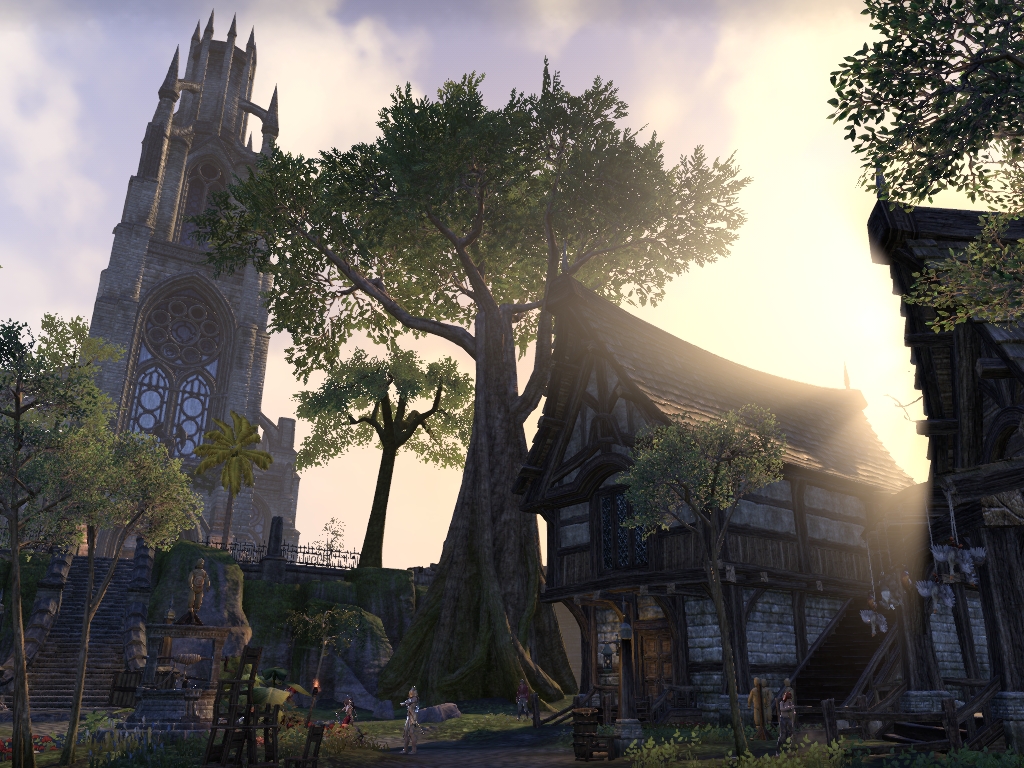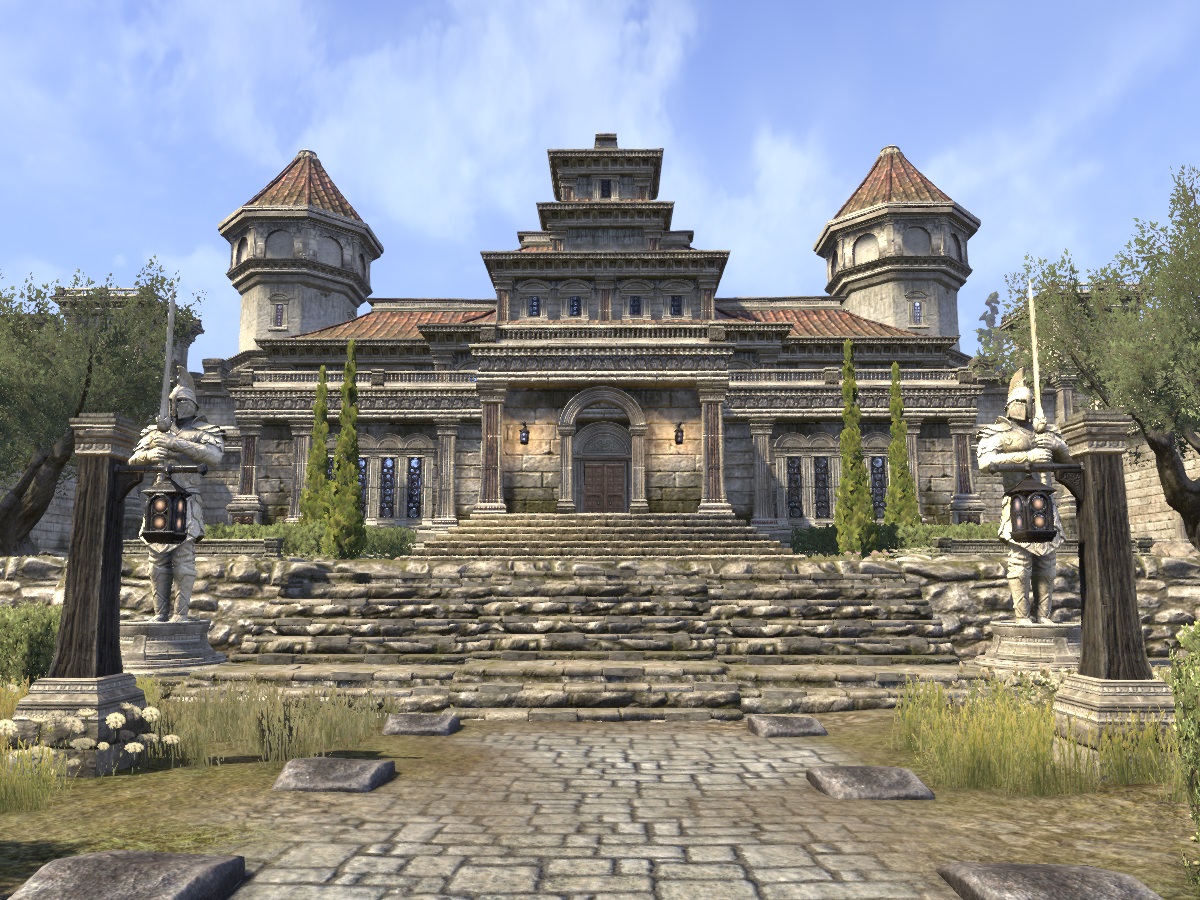Maintenance for the week of November 25:
• [COMPLETE] Xbox: NA and EU megaservers for maintenance – November 27, 6:00AM EST (11:00 UTC) - 9:00AM EST (14:00 UTC)
• [COMPLETE] PlayStation®: NA and EU megaservers for maintenance – November 27, 6:00AM EST (11:00 UTC) - 9:00AM EST (14:00 UTC)
• [COMPLETE] Xbox: NA and EU megaservers for maintenance – November 27, 6:00AM EST (11:00 UTC) - 9:00AM EST (14:00 UTC)
• [COMPLETE] PlayStation®: NA and EU megaservers for maintenance – November 27, 6:00AM EST (11:00 UTC) - 9:00AM EST (14:00 UTC)
Stylistic differences between Nibenay and Colovia
Athan1
✭✭✭✭✭
✭
✭
I'm a little confused about the stylistic differences between Nibenay and Colovia. With the upcoming DLC this will be relevant, as a significant portion of Nibenay will be covered. Could anyone help with any of these questions? Screenshots would be most helpful.


- Are the playable Imperials Colovian (C) on Nibenese (N)?
- Is the Hollow City N or C?
- Isn't the entire Gold Coast in N architecture? While the Gold Coast is supposed to be part of C...
- Are Cyrodiil's (PvP zone) settlements C or N?
- Are there any other N/C cities outside Cyrodiil?
- My understanding is that Southpoint in Grahtwood for example is Colovian? (first image below)
- Aren't most player houses in C architecture, apart from Snow Globe and the Linchal Grand Manor?(second image below)


Athan Atticus Imperial Templar of Shezarr
0
Best Answer
-
Ufretin✭✭✭✭✭1. Both, I guess
2. N
3. Anvil is N, Kvatch is C
4. Both. Chedinhal, for instance, is C while Cropsford, Vlastarus and the AD base are N.
5. The ones I know of are all C, like Arenthia or the one in Malabal Tor.
6. Correct
7. Correct
Judging by the previews, the next chapter will add an entirely new Imperial style, much like Hew's Bane added a new version of "redguard" style, Summerset a new "Alter" style, etc.Edited by Ufretin on 10 February 2021 01:445
-
ealdwin✭✭✭✭✭
✭Part of the confusion probably comes from ZOS treating Colovian/Nibenese architecture as more of a Northern/Southern Cyrodiil style. Their Nibenese style appears to be based on TES IV Anvil design, which meamt they had to use that style in the Gold Coast (Colovian area). But, since the Colovian Style closely resembled TES IV Cheydinhal, they used that style for Cheydinhal instead of Nibenese.
But that’s kind of what happens when you base a regional style on a city style and then limit half-timbered design to a regional design. It results in slight inconsistencies.4 -
Taloros✭✭✭✭I fear, my friends, that though we might wish otherwise, Nibenay* will never be covered in ESO, not even in another CRPG. All we have is our dreams.
*http://thedarksun.wikidot.com/nibenay-city-stateEdited by Taloros on 10 February 2021 06:350 -
Orion_89✭✭✭✭The thing is that cultures of tamriel were invented before their predecessors. Those things we know from lore-books could be difficult to match with each other, because writers go from consequences to causes. Also design industries of 90-s and of 2020-s have both quantitative and qualitative differences, you can see it just by looking at crafting motifs/styles/outfits progression: vanilla stuff is much more simple then current.
So, as Ufretin said, we will might see reimagined cultural spirit as it was with other chapters.0 -
Athan1✭✭✭✭✭
✭Hmm it's a bit weird how we got all 16 Khajiit furstocks covered, but then the game doesn't make a clear distinction between Colovians and Nibenese, which is so obvious, culturally and biologically. Hopefully the Blackwood expansion will address this, like how Elsweyr added the missing furstocks. Imperials are already way overlooked so hopefully their lore will get more attention.Athan Atticus Imperial Templar of Shezarr3 -
Ufretin✭✭✭✭✭RemanCyrodiil_I wrote: »An alternative argument (and the one I subscribe to) is that there is no Colovian style currently in ESO. The Colovian architecture and furnishings that you identify are instead described by Zenimax themselves as a third, Second Empire, style that is neither distinctively Colovian nor Nibenean.
ZOS clearly was not interested in rectifying Oblivion's overlooking of the Colovian/Nibenese cultural divide, and as a result all Imperials (in my view) should be taken simply as Imperials, and that you should go for whatever style you find most aesthetically pleasing. Opponents to this argument note that the vanilla 'Imperial' furnishings we received were originally called 'Colovian' during the alpha tests - but were renamed to 'Imperial' before launch. For me this shows that while they originally intended to, they later decided not to wade into the cultural mish-mash left to them by TES:Oblivion and should not be taken as final proof of them being Colovian.
As a result, we have the vanilla Hollow City/Anvil style that is Nibenese, and the Second Empire style. The Second Empire style is consequently used in both prominent Colovian cities like Kvatch, but also in Cheydinhal, the foremost city of Nibenay. Meanwhile poor Bravil is stuck with Breton architecture. We also have the situation where these Nibenean cities use standard 'Imperial'/'Second Empire' furnishings inside, including the Imperial City itself. There are no Nibenese (or Colovian) furnishings.
This is only set to get more confusing as we get the Leyawiin style this year. We can argue that it is a subset of Nibenese architecture, but it will presumably only be described as representing Leyawiin, like how we got 'Solitude' furnishings with Greymoor that were used throughout Western Skyrim (and in the Palace of the Kings in Eastmarch). If we get a Skingrad/Colovia chapter, this will also likely only use 'Skingrad' architecture and furnishings and won't represent Colovia as a whole.
You could argue that Southpoint uses 'Colovian' architecture because it is described as an exclusively Colovian colony, but for me this also implicitly argues that all Imperial colonies, houses and settlements outside Cyrodiil are exclusively Colovian as well, as all Imperial architecture in Valenwood (including Southpoint), Elsweyr and Black Marsh use Second Empire style.. except for Seyda Neen, which uses a distinct Imperial style (that presumably shouldn't exist until the Third Era). While the Seyda Neen buildings have Nibenean doors, I have taken to believing that its architecture represents a 'Third Empire' style which was added purely for nostalgia.
Tbh, I doubt that eso devs had any in-depth lore considerations in mind when they designed eso's achitectural styles. I assume they just wanted to create a distinct, easily recognizable (and easily copy/pasteable for lazy town designers ) style for each race, based on what players have seen in previous TES titles.
) style for each race, based on what players have seen in previous TES titles.
So we can even count ourselves lucky that Imperials actually got two different styles in vanilla eso, probably due to the fact that town architecture shown in TES IV was too diverse to merge into one generic "Imperial" style.
My guess is that the naming fashion of "Colovian/Nibenese" was just a working title that sounds fancier than "Imperial a / Imperial b" and not really a decision based on actual lore.Edited by Ufretin on 10 February 2021 11:262 -
NotaDaedraWorshipper✭✭✭✭✭
✭✭✭✭✭Hmm it's a bit weird how we got all 16 Khajiit furstocks covered, but then the game doesn't make a clear distinction between Colovians and Nibenese, which is so obvious, culturally and biologically. Hopefully the Blackwood expansion will address this, like how Elsweyr added the missing furstocks. Imperials are already way overlooked so hopefully their lore will get more attention.
The difference between Colovians and Nibenese is mainly cultural, not biological.[Lie] Of course! I don't even worship Daedra!0 -
Athan1✭✭✭✭✭
✭NotaDaedraWorshipper wrote: »Hmm it's a bit weird how we got all 16 Khajiit furstocks covered, but then the game doesn't make a clear distinction between Colovians and Nibenese, which is so obvious, culturally and biologically. Hopefully the Blackwood expansion will address this, like how Elsweyr added the missing furstocks. Imperials are already way overlooked so hopefully their lore will get more attention.
The difference between Colovians and Nibenese is mainly cultural, not biological.
Colovians are more robust due to higher admixture with Nords, while Nibenese are more gracile.
Re Oblivion architecture, let's keep in mind that ESO takes place way in the past, so discrepancies would make sense.
Btw, what style is Imperial city? Rather C or N?Athan Atticus Imperial Templar of Shezarr0 -
MaisonNaevius✭✭✭✭✭
✭Btw, what style is Imperial city? Rather C or N?
The Imperial City is a mix between Ayleid and Nibenese architecture.
I mostly agree with RemanCyrodiil_I
I will add that of all the architectures of the base game, that of the Second Empire is logical and justifiable.
The Akaviri Potentate and his Second Empire expanded and wanted to include their imagery in all of the colonies and outposts.
I'm not against the fact that there will only be Leyawiin's Tudor architecture in Blackwood.
It will even be interesting to see the face of the forts sharing this architecture. Without the Second Empire of the Potentate having passed through this area.
But in the future, I think of Colovia, I hope to find the architecture of the Second Empire occasionally. By occasionally I mean these are the builds we are already aware of (Drad estate, Istirus outpost - estate - fort).
It will seem strange to me that the majority of the constructions of Colovia will have the same architecture of Skingrad. But Skingrad had "ancient Colovian" architecture in TES IV and that would ultimately make sense.> Wiki spécialisé sur Cyrodiil / en cour de rédaction <
https://tescyrodiipedia.blogspot.com/
- Naevius-0 -
NotaDaedraWorshipper✭✭✭✭✭
✭✭✭✭✭NotaDaedraWorshipper wrote: »Hmm it's a bit weird how we got all 16 Khajiit furstocks covered, but then the game doesn't make a clear distinction between Colovians and Nibenese, which is so obvious, culturally and biologically. Hopefully the Blackwood expansion will address this, like how Elsweyr added the missing furstocks. Imperials are already way overlooked so hopefully their lore will get more attention.
The difference between Colovians and Nibenese is mainly cultural, not biological.
Colovians are more robust due to higher admixture with Nords, while Nibenese are more gracile.
Re Oblivion architecture, let's keep in mind that ESO takes place way in the past, so discrepancies would make sense.
Btw, what style is Imperial city? Rather C or N?
No they are not. Colovians and Nibenese have the same heritage. The difference is minimal, and at most Colovians can have slightly more ancient nords among their ancestors, and Nibenese have some cases of Tsaesci. But in general they are pretty much the same, because their mixed nedic heritage was all over Cyrodiil and the difference was caused by a cultural and economical split. Colovians are seen as more militaristic and rugged. while Nibenese are more for commence, magic and philosophy. So yes, some Colovians would be more robust, and Nibenese gracile, but both can be either, because it has nothing to do with their biology. It's just how their cultures has shaped them thanks to their different views.[Lie] Of course! I don't even worship Daedra!0
